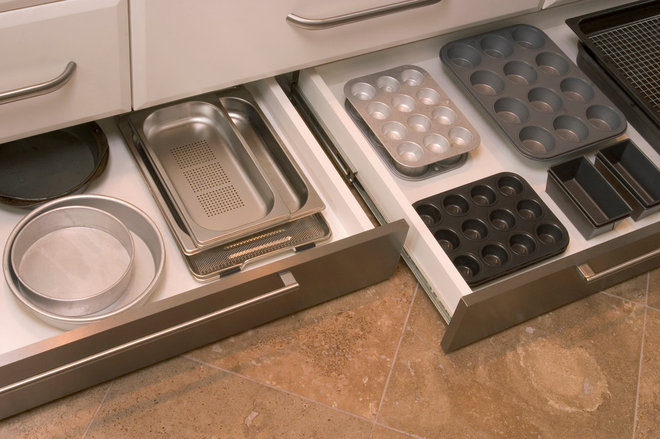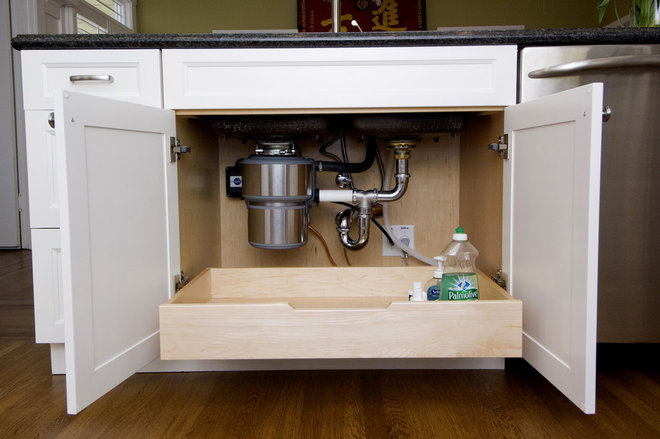Toe-kick drawers. This is such a clever solution, as if someone was looking at a kitchen and saying, ‘"Hmm, there simply must be more inches around here somewhere,” then looked down at their feet and had a light-bulb-over-the-head moment. There’s valuable space lurking beneath those lower cabinets.
Cookie sheets and cutting boards. These pieces are shallow but hard to find a good spot for. If you don’t have the aforementioned toe-kick drawers, they wind up toppling over pots and pans or getting buried beneath them. A narrow cabinet takes up very little room and can house cutting boards and baking sheets. And check out how well-organized the spices are in the adjacent drawer.
A hidden place for charging. Speaking of counter clutter, personal devices are the worst. And they’re full of germs — not a good mix with surfaces where you prepare food. Charging drawers keep them tucked away, safe from spills and ready for playing podcasts and looking up recipes while you’re working in the kitchen.
Now I can’t stop thinking about those germs. Stash a packet of cleaning wipes in here too.
Upper cabinet storage below. With open shelving and windows where our china and glassware storage used to be, lower cabinets need to work much harder and smarter these days. When outfitted like this, it makes it easy. Well, fairly easy — think of it as getting some extra squats into your workout when you need to grab something.
The Pros and Cons of Upper Kitchen Cabinets and Open Shelves
With the help of pullouts like these, pantry storage can be moved below as well.

















